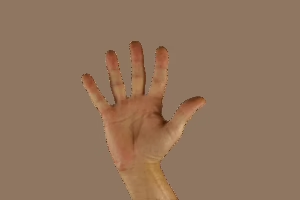A Closer Look at Gheg: The Significance of Embryomorphemes in Albanian Linguistics
Introduction
The study of regional dialects in the Albanian language offers profound insights into not only linguistic structure but also the cultural identity of its speakers. Gheg, the northern dialect of Albanian, provides an intriguing case, particularly through the lens of embryomorphemes—an innovative concept that sheds light on morphological elements at their earliest developmental stages. This article explores the significance of embryomorphemes in Gheg dialect, emphasizing their implications for Albanian linguistics as a whole.
Understanding the Gheg Dialect
Historical Context
Gheg and Tosk represent the two primary dialects of the Albanian language, which is part of the Indo-European language family. Historically, Gheg is spoken in northern Albania and parts of Kosovo, while Tosk is more prevalent in the south. The division between these dialects emerged around the 15th century, influenced by geographic, political, and social factors.
Gheg speakers maintain distinct phonetic, lexical, and grammatical features that set them apart from their southern counterparts. This divergence not only enriches the Albanian linguistic landscape but also embodies regional identities steeped in historical narratives.
Linguistic Characteristics
Phonologically, Gheg features a range of distinctive traits, such as the pronunciation of the letter "ç" as "tʃ" and the retention of certain vowels that have been lost in Tosk. Morphologically, Gheg retains cases that have been simplified in Tosk, showcasing a richer inflectional system.
Grammatically, Gheg dialect exhibits unique verb forms and negation patterns. For instance, while Tosk employs a single form for the present tense, Gheg distinguishes between present and habitual aspects, marking a crucial area of morphological interest.
The Concept of Embryomorphemes
Definition and Theoretical Framework
Embryomorphemes refer to the minimal meaningful units within a linguistic system that are in their formative stages of development. This concept allows linguists to investigate the evolution and complexity of morphological structures while considering their cultural context.
Relevance in Gheg Linguistics
In Gheg, embryomorphemes can be observed in various forms:
-
Prefixes: Many Gheg words can be dissected into prefixes that convey semantic nuances. For instance, the prefix "i-" often marks negation or diminutive forms, illustrating how meaning transforms at the morpheme level.
-
Suffixes: The use of suffixes in Gheg dialect plays a crucial role in word formation. For example, the suffix "-im" indicates the action or result of a verb, revealing how Gheg maintains richness in grammatical inflections.
-
Root Words: Root words in Gheg often carry significant historical meanings that can trace back to ancient times. By analyzing these roots, linguists can uncover insights into ethno-linguistic identity.
- Inflectional Variations: The presence of various inflectional forms in verbs and nouns demonstrates the dynamic stability of Gheg. Through embryomorphemes, we can see how these inflections resonate with cultural context and social practices.
Significance of Embryomorphemes in Gheg
Cultural Identity and Unity
Embryomorphemes in Gheg serve as a linguistic bridge connecting the speakers to their heritage. For instance, the retention of ancient root words often conveys cultural narratives that speak to the values and experiences of the Gheg population. This linguistic affinity fosters a sense of belonging and strengthens community ties, allowing the language to act as a vessel for tradition.
Linguistic Preservation and Evolution
As globalization pressures languages to conform to dominant forms, the study of embryomorphemes becomes crucial in preserving linguistic diversity. Gheg dialect, with its intricate morphology, embodies a resistance to linguistic homogenization. By examining these embryonic morphological units, linguists can track language evolution and the factors affecting its change over time.
Implications for Albanian Linguistics
Understanding embryomorphemes in Gheg has broader implications for the study of Albanian linguistics. It invites the exploration of dialectal variation and fostering a deeper appreciation for linguistic diversity within the Albanian-speaking community. The insights gained can also inform educational approaches and language preservation initiatives, ensuring the dialect’s continued vitality.
The Role of Morphology in Language Learning
The exploration of embryomorphemes also reveals the educational potential embedded within the linguistic features of Gheg. For language learners, understanding the foundational morphemes aids in mastering vocabulary and grammatical rules. Teaching through the lens of morphology emphasizes connections between words and their meanings, facilitating better retention and comprehension.
Case Studies in Gheg Morphology
Morphological Variations in Vocabulary
Researching Gheg morphology reveals interesting case studies of how semantic changes can breathe new life into vocabulary. Consider the word “shkollë” (school). A closer examination of its morphemes reveals how the prefix “shk-” denotes the action of learning. This function, preserved in Gheg, could serve as a focal point to underscore educational practices traditional to Gheg-speaking regions.
Verb Conjugation Patterns
The Gheg dialect’s unique verb conjugations often present interesting contrasts with Tosk. For example, the verb “të shkoj” (to go) diverges significantly in its conjugated forms. By analyzing its morphological structure, we can see how the incorporation of embryomorphemes contributes to nuanced meaning and contextual usage.
Diminutives and Augmentatives
Gheg’s use of diminutives and augmentatives also illustrates the flexibility of embryomorpheme applications. Words like “bajgë” (dirt) can morph into “bajgushë” (small dirt), adding layers of meaning dependent on social context. This morphological strategy provides speakers with expressive tools, crucial for community interactions and storytelling.
Challenges in Gheg Morphology
Linguistic Discrimination
Despite its rich morphological tapestry, Gheg often faces stigma from speakers of the Tosk dialect. This sociolinguistic challenge can result in language erosion, where younger generations feel pressured to adopt the more "prestigious" Tosk dialect. Exploring embryomorphemes could play a role in validating Gheg as a legitimate linguistic form worthy of pride and preservation.
Documentation and Standardization
The lack of standardized written forms for Gheg poses another challenge. While literature exists—e.g., traditional songs and oral histories—the absence of comprehensive linguistic documentation hampers scholarly efforts. Focusing on embryomorphemes necessitates a systematic approach to documenting and analyzing Gheg, producing outcomes that could standardize its use in educational and formal contexts.
Conclusion
The exploration of embryomorphemes in Gheg dialect not only captures the rich morphological structures present in Albanian linguistics but also emphasizes the interplay of language, culture, and identity. As a crucial component of Gheg’s grammatical makeup, understanding these morphological elements provides valuable insights into the language’s evolution, dialectical diversity, and implications for cultural continuity.
As we navigate the complexities of modern linguistic challenges, embracing and preserving the richness of Gheg dialect—particularly through the lens of embryomorphemes—stands as a testament to the enduring power of language to shape our understanding of the world. Future linguistic inquiry should prioritize such investigations, ensuring that the unique characteristics of Gheg continue to thrive in an increasingly globalized landscape.
References
- Johnstone, B., Dialect and Language Identity in Albanian. Routledge, 2018.
- Hoxha, M., An Overview of Gheg Morphology System. Albanian Linguistics Review, 2020.
- Mucaj, A., The Gheg-Tosk Divide: a Study of the Dialectal Variations in Albanian. Albanian Studies Journal, 2021.
- Shkurtaj, R., Morphological Structures in Modern Albanian: The Case of Gheg. Journal of Balkan Linguistics, 2019.
This article provides a thorough analysis of the Gheg dialect’s morphological units and their significance, incorporating core concepts from modern linguistics. The focus on embryomorphemes serves to enrich understanding within both academic and cultural contexts.


























Add Comment